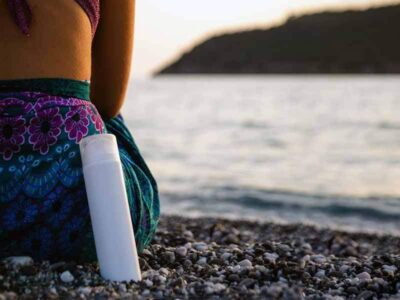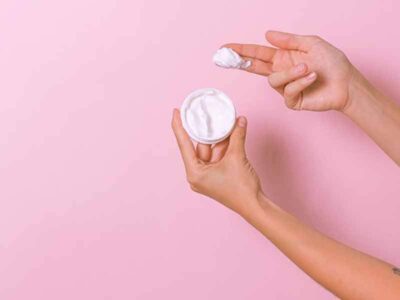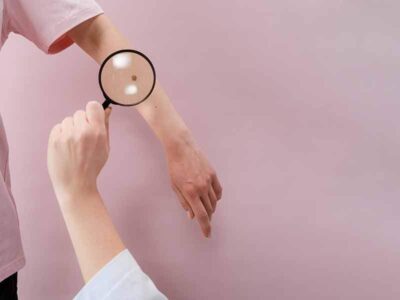FAQs
What is the Best Sun Screen?
 Sunscreen is a substance that is applied to the skin to absorb and/or reflect the sun’s harmful Ultraviolet rays (UVA and UVB). Most sunscreens protect against UVB rays and not all UVA rays. Therefore, IT IS VERY IMPORTANT TO USE SUNBLOCKS CONTAINING ZINC OXIDE OR TITANIUM DIOXIDE to get the best protection against UVA light, which is implicated in the development of the deadly form of skin cancer, MALIGNANT MELANOMA. Additionally, a full/broad spectrum sun block minimizes extrinsic skin aging and pigment disorders.
Sunscreen is a substance that is applied to the skin to absorb and/or reflect the sun’s harmful Ultraviolet rays (UVA and UVB). Most sunscreens protect against UVB rays and not all UVA rays. Therefore, IT IS VERY IMPORTANT TO USE SUNBLOCKS CONTAINING ZINC OXIDE OR TITANIUM DIOXIDE to get the best protection against UVA light, which is implicated in the development of the deadly form of skin cancer, MALIGNANT MELANOMA. Additionally, a full/broad spectrum sun block minimizes extrinsic skin aging and pigment disorders.
When you look for a SUN SCREEN, the product you choose should offer “broad-spectrum” protection against both UVA and UVB rays. The product should be water resistant – wash off less quickly due to swimming or sweating. They should contain zinc oxide or titanium dioxide which will remain white until well rubbed into the skin. You need to read the ingredients on labels. You should also try them on a small area of your skin two days before using them to be sure they are not irritating. Please ask us at the Skin Cancer Treatment Center for specific recommendations tailored to your individual needs.
What are the Best Moisturizers?
 If you have “oily” skin, you don’t need to use anything. Lucky you!
If you have “oily” skin, you don’t need to use anything. Lucky you!
But if your skin is dry, there are some tips and products that you can use to maximize skin hydration. First, you should minimize hot water and soap as these remove your natural oil. Only use a superfatted, unscented bar soap (no liquid soap – most are harsh with too many chemicals) on areas of your body where you perspire (“Stinky areas”) and plain room temperature water on the rest.
The only way to moisturize your skin is to apply moisture (water) to it and then try to keep the moisture from evaporating off your skin by applying some kind of “oil”.
If you look at many creamy “moisturizers”, even the most expensive ones, the first ingredient is WATER! This is mixed with some kind of “oil”, emulsifiers to keep the water and oil from separating, all kinds of chemicals and preservatives to prevent bacteria from growing in it, and fragrance to keep it from smelling rancid. So for people who have sensitive or skin that is allergic to chemicals, you can see that there are many ingredients in creams or lotions that may irritate your skin. Plus, when you put on a nice creamy moisturizer, you are applying expensive water that evaporates away. To be effective, you need to apply many times throughout the day.
So what is the BEST Moisturizer? The answer is straight forward. KEEP IT SIMPLE AND SAVE YOURSELF LOTS OF MONEY.
When you get out of the bath or shower, just towel dry and apply a simple oil on top of damp skin. This can be Canola oil, coconut oil, light mineral oil, Vaseline, Albolene, crisco, olive oil, palm oil, shea butter (they all work about the same). Choose your favorite and apply sparingly to moist skin to “keep in” the moisturizing effect of water by preventing its evaporation.
How often should I have a Skin Check?
 As part of a complete early detection strategy, it is recommended that you see a dermatologist once a year, or more often if you are at a higher risk of skin cancer, for a full-body, professional skin exam.
As part of a complete early detection strategy, it is recommended that you see a dermatologist once a year, or more often if you are at a higher risk of skin cancer, for a full-body, professional skin exam.
To help you prepare and make the most of your appointment, follow these five simple steps.
- Perform a self-exam and come to your appointment prepared with notes about any new, changing or unusual spots you want to point out to your dermatologist. If you’ve taken smartphone photos of a spot that has changed over time, be sure to show them to your dermatologist.
- Remove nail polish from your fingers and toes to enable thorough examination of fingers, nails and nail beds, since skin cancers can form there.
- Wear your hair loose. Remove pony tails, buns or hair clips so that your doctor can get a good look at your scalp where skin cancers can, and do, develop.
- Pack makeup remover to bring to your appointment and remove any makeup before your exam so that the skin around your eyes is easy to examine.
- Ask questions. This is your opportunity to get valuable advice and insight from a professional trained specifically in diseases of the skin. From explanations of unfamiliar terms to pointers on how to do a skin self-exam, your doctor is an excellent source of information!
During the Exam
If you’ve never had atypical moles or skin cancer, the exam will likely be brief (about 10 minutes). You’ll need to remove your clothes and put on a medical exam gown. It is unlikely you will be told to remove your underwear, unless you have indicated that a spot on your genitalia concerns you. Your dermatologist will thoroughly check your skin from head to toe, paying close attention to hard-to-see spots like your scalp, back and buttocks, behind your ears, and even between your toes. Your dermatologist may utilize a small handheld magnifying device called a dermatoscope, that visualizes the outer surface of the skin (the epidermis) and the layers just beneath it.
Your doctor may biopsy one or more suspicious spots. This usually means removing part or all of the lesion and sending it to a lab for analysis. If the report comes back that the spot is skin cancer, your physician will contact you and explain the type of skin cancer and treatment options.
Remember that early detection of skin cancer is the key to the most minimal and cost-effective treatment with the highest chance of a cure. Make your appointment soon!
Is this Skin Cancer?
 Skin cancer symptoms can vary depending on the type of skin cancer and its location on the skin. In general, any new or changing spots on your skin that persist for two weeks or more should be brought to your doctor’s attention.
Skin cancer symptoms can vary depending on the type of skin cancer and its location on the skin. In general, any new or changing spots on your skin that persist for two weeks or more should be brought to your doctor’s attention.
The most common location for certain kinds of skin cancer is on sun-exposed skin such as the face, neck, arms and legs. Skin cancer often has no symptoms in its early stages, though symptoms can appear at any point.
Skin cancer symptoms may include:
- A new spot on the skin or an existing spot that changes in size, shape or color. These changes can vary greatly so there is no one way to describe how a skin cancer looks.
- A spot that is itchy or painful
- A non-healing sore that bleeds or develops a crust
- A red- or skin-colored shiny bump on the top of the skin
- A red rough or scaly spot that you can feel
- A growth with a raised border and central crust or bleeding
- A wart-like growth
- A scar-like growth without a well-defined border
If you think that you may have skin cancer and/or have any suspicion about a growth on your body, please make an appointment at the Skin Cancer Treatment Center to be fully evaluated.



